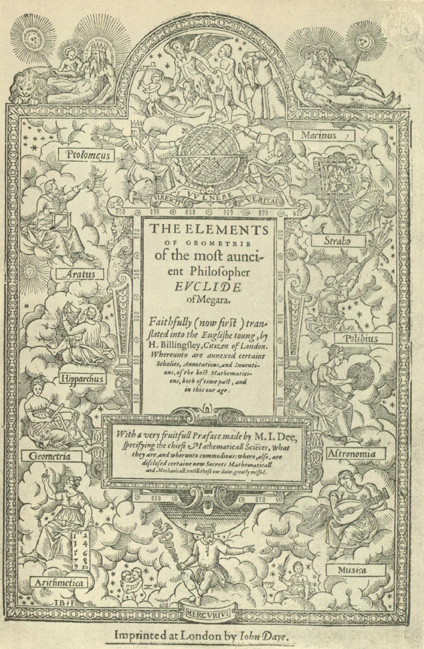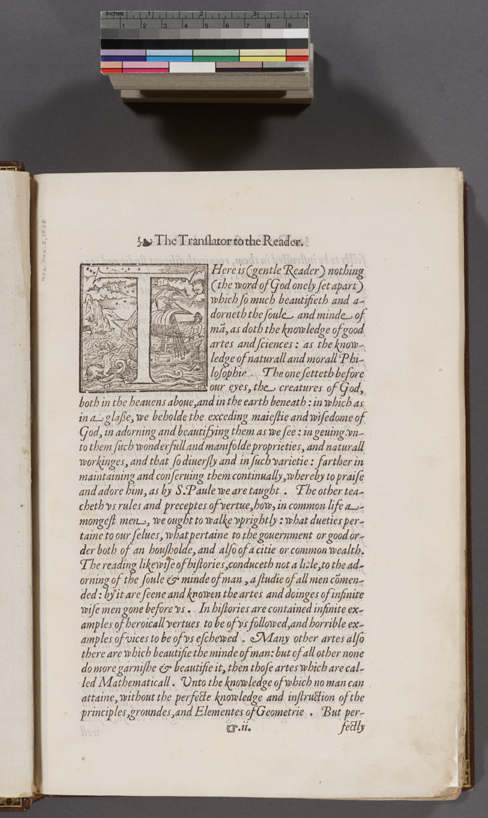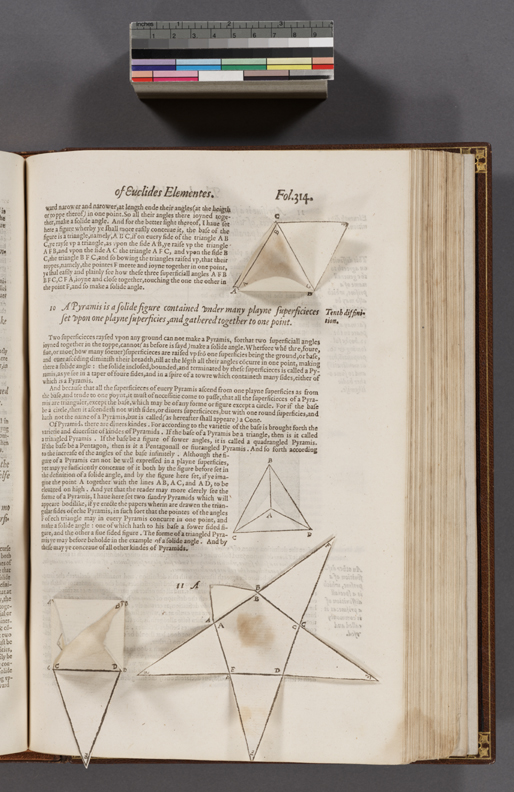- About MAA
- Membership
- MAA Publications
- Periodicals
- Blogs
- MAA Book Series
- MAA Press (an imprint of the AMS)
- MAA Notes
- MAA Reviews
- Mathematical Communication
- Information for Libraries
- Author Resources
- Advertise with MAA
- Meetings
- Competitions
- Programs
- Communities
- MAA Sections
- SIGMAA
- MAA Connect
- Students
- MAA Awards
- Awards Booklets
- Writing Awards
- Teaching Awards
- Service Awards
- Research Awards
- Lecture Awards
- Putnam Competition Individual and Team Winners
- D. E. Shaw Group AMC 8 Awards & Certificates
- Maryam Mirzakhani AMC 10 A Awards & Certificates
- Two Sigma AMC 10 B Awards & Certificates
- Jane Street AMC 12 A Awards & Certificates
- Akamai AMC 12 B Awards & Certificates
- High School Teachers
- News
You are here
Mathematical Treasures - Billingsley Euclid

In 1570 Sir Henry Billingsley (d. 1606) published the first English-language edition of Euclid's Elements as The elements of geometrie of the most ancient philosopher Euclide of Megara [sic]. This is the title page. Billingsley committed an error common in the Renaissance of confusing the mathematician, Euclid of Alexandria, with the philosopher, Euclid of Megara. For many years a controversy raged as to who was the real author of this work: Billingsley or, the more well known John Dee (1527–1608), mystic and scientific advisor to Queen Elizabeth I. At the end of the nineteenth century, the copy of Theon’s Euclid used by Billingsley in his translation was discovered. The numerous marginal notes and comments left no doubt that Henry Billingsley was indeed the translator and major commentator of the disputed work. Further, his conjectures affirmed the fact that he was a talented mathematician. Above: The title page design is an allegorical woodcut print on the applications of geometry. Billingsley’s annotated copy of Theon’s Euclid now resides in the Princeton University Library.

Billingsley was a rich merchant and served as Lord Mayor of London. He was also a mathematics graduate of Cambridge University and versed in Greek. His edition of the Elements was an opus magnus. Billingsley translated the thirteen books of Euclid from the Greek edition of Theon of Alexandria (ca. 390), added three additional books attributed to Euclid, and included notes from various ancient and modern commentators. The finished work was over a thousand pages long, included unique “pop up” models of geometric solids, and contained a preface written by Dee. The image above shows Billingsley’s preface note to the reader advocating the study of mathematics.

Above: Folio 314 of Billingsley's Elements. This page contains three pop up models of pyramids. These pop-up models occur throughout Book XI on solid geometry and were hand-glued into each copy of the work.
For images from Billingsley's Greek and Latin source material, see Mathematical Treasure: Billingsley's Sources for the First English Euclid's Elements here in Convergence.
Frank J. Swetz and Victor J. Katz, "Mathematical Treasures - Billingsley Euclid," Convergence (January 2011)




